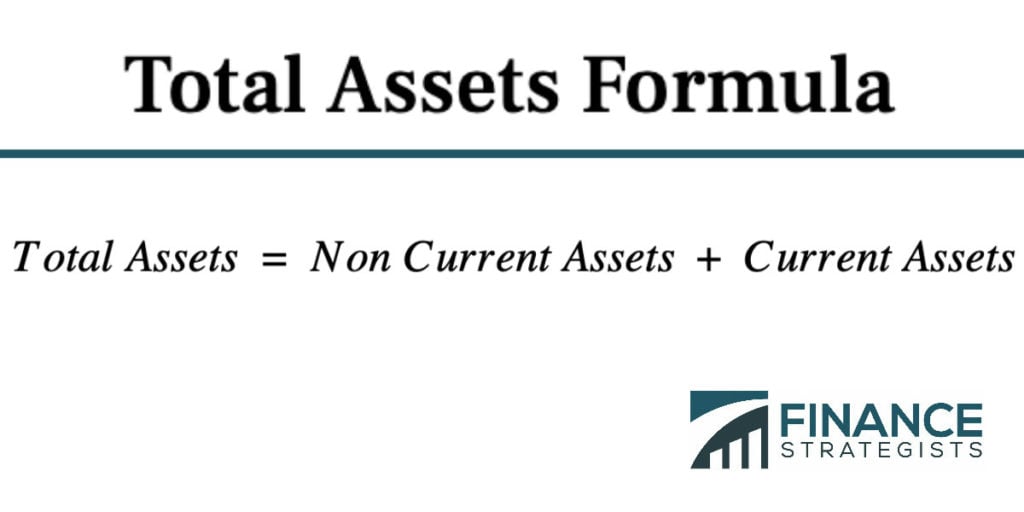Total assets formula can be defined as: Assets are anything that the company owns, has economic value, and can be converted to cash. Current assets are assets that are expected to be converted to cash within one financial year, while non-current assets are held by a company for more than one year, and are not readily convertible into cash. How quickly an asset can be converted to cash or a cash equivalent is a term called liquidity. The most liquid asset is cash itself, while non-liquid assets include things such as real estate, machinery, or land because they cannot be converted quickly to cash. Total assets from a company are typically presented on a balance sheet, where the total assets must be equal to the sum of total liabilities and stockholders’ equity combined. The liabilities and shareholders’ equity show how the assets of a company are financed. This accounting equation ensures that a company’s balance sheet remains balanced, and is the foundation for the “double entry system” in accounting.Formula for Total Assets

Total Assets Calculation
Liquidity of Assets
Total Assets on a Balance Sheet
Total Assets Meaning
Total Assets Formula FAQs
Total Assets = Non-Current Assets + Current Assets.
Assets are anything that the company owns, has economic value, and can be converted to cash.
How quickly an asset can be converted to cash or a cash equivalent is a term called liquidity.
Total assets from a company are typically presented on a balance sheet, where the total assets must be equal to the sum of total liabilities and stockholders’ equity combined.
Current assets can be converted to cash within one financial year, while non-current assets are intended to be held for more than one year, and are not readily convertible into cash.
True Tamplin is a published author, public speaker, CEO of UpDigital, and founder of Finance Strategists.
True is a Certified Educator in Personal Finance (CEPF®), author of The Handy Financial Ratios Guide, a member of the Society for Advancing Business Editing and Writing, contributes to his financial education site, Finance Strategists, and has spoken to various financial communities such as the CFA Institute, as well as university students like his Alma mater, Biola University, where he received a bachelor of science in business and data analytics.
To learn more about True, visit his personal website or view his author profiles on Amazon, Nasdaq and Forbes.











